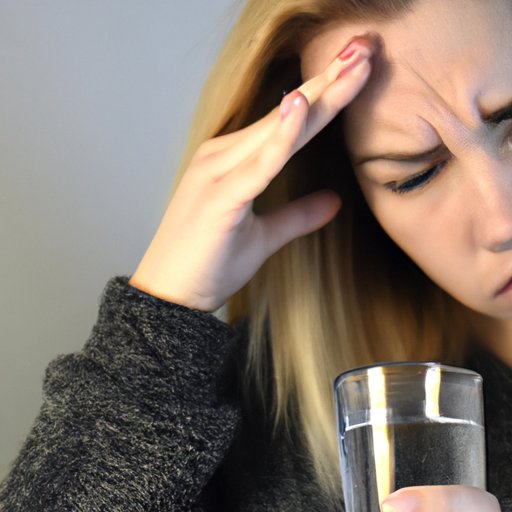
I. Introduction
Anxiety is a natural emotional response to stress. However, when anxiety becomes persistent, excessive, and uncontrollable, it can significantly impact an individual’s daily life. According to the World Health Organization, anxiety disorders affect over 270 million people worldwide. If left untreated, anxiety disorders can lead to the development of other health conditions, such as depression, substance abuse, and even suicide. This article provides comprehensive information on anxiety disorders, including its symptoms, causes, and treatment approaches.
II. A Comprehensive Analysis of Anxiety Disorders: Symptoms, Causes, and Treatment Approaches
Anxiety disorders are a group of mental health conditions characterized by persistent feelings of fear, worry, and apprehension. These feelings can manifest in physical and psychological symptoms, such as palpitations, sweating, and panic attacks. The most common types of anxiety disorders are Generalized Anxiety Disorder, Panic Disorder, Social Anxiety Disorder, and Specific Phobias.
The causes of anxiety disorders are still not completely understood. However, there are several risk factors that may contribute to the development of anxiety disorders, such as genetics, brain chemistry, life experiences, and environmental stressors. Treatment approaches for anxiety disorders include cognitive-behavioral therapy, medication, and alternative treatments such as exercise, yoga, and meditation.
III. Debunking Myths About Anxiety as a Mental Illness
Anxiety disorders are often misunderstood, and many myths exist about this condition. Some common misconceptions about anxiety disorders include the idea that it’s a sign of weakness, that it’s not a real condition, or that it’s a choice. These myths are incorrect and can contribute to stigma and negative attitudes towards those struggling with anxiety disorders. Understanding the facts about anxiety disorders can help individuals better cope with the disorder and support their loved ones.
IV. Understanding the Link Between Anxiety and Depression: Is Anxiety Really a Mental Disorder?
Anxiety and depression are often used together, but they refer to two different mental health conditions. Anxiety is a feeling of excessive worry or fear, while depression is a mood disorder, often characterized by sadness, loss of interest, and hopelessness. However, anxiety and depression frequently co-occur. Individuals with anxiety disorders are at a higher risk of developing depression, and vice versa. The relationship between these two conditions is complex, and several factors contribute to their link.
V. Anxiety Disorders and Its Impact on Daily Life
Anxiety disorders can significantly impact an individual’s daily life, affecting work life, social life, and relationships. Individuals with anxiety disorders may experience difficulty completing everyday tasks, such as going to work or school. They may also avoid social situations or have trouble forming and maintaining relationships. The impact of anxiety disorders on daily life can lead to lower quality of life and increased stress levels.
VI. The Effect of Anxiety on Our Mental and Physical Health
Anxiety disorders can have severe effects on both mental and physical health. Individuals with anxiety disorders are at a higher risk of developing other health conditions, such as depression, substance abuse, and physical health problems. The physical symptoms of anxiety, such as increased heart rate and rapid breathing, can also affect an individual’s health, leading to conditions like hypertension and heart disease. Coping strategies like meditation, therapy, and exercise can help manage the physical and mental health risks associated with anxiety disorders.
VII. The Role of Therapy and Medication in Treating Anxiety Disorders
Therapy and medication are the primary treatments used to manage anxiety disorders. Therapy, such as cognitive-behavioral therapy, can help individuals manage symptoms, change negative thought patterns, and develop coping strategies. Medication, such as Selective Serotonin Reuptake Inhibitors (SSRIs), can help balance the levels of neurotransmitters in the brain, alleviating anxiety symptoms. Finding the right therapist and medication is crucial to effectively manage anxiety disorders.
VIII. Conclusion
Anxiety disorders are a common condition experienced by many individuals, and it’s important to recognize that it is a real condition that requires treatment. This article provides comprehensive information on anxiety disorders, including its symptoms, causes, and treatment approaches. By understanding the facts about anxiety disorders, we can help support individuals struggling with the disorder and work towards reducing the stigma surrounding mental health.
If you or someone you know is struggling with anxiety disorders, seek professional help and support. With the right treatment, anxiety disorders can be effectively managed, and individuals can lead fulfilling, anxiety-free lives.





